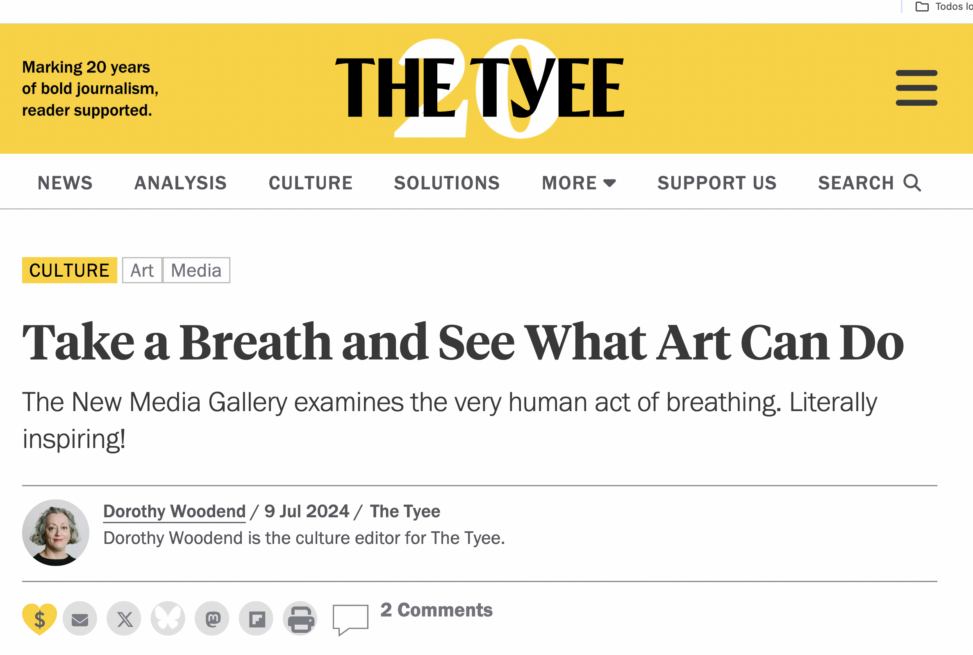Texto sobre la exposición PneumoMachinic en la New Media Gallery en Vancuver de la que forma parte la instalación sonora Ornanismo (Organscape).
A room of ‘automata,’ and the techno-animal interface A similar mixture of delight and divergence, of different qualities merging into a greater whole, is embodied in Xoán-Xil’s Organismo (Organscape).
At first glance, the horde of mechanical creatures that comprise the work resembles a combination of birds, insects or small dinosaurs. With their spindly metal legs and squeeze-box bodies that look like innards of an accordion (or, in the case of one individual, a small black balloon that functions like a bladder), they’re both organic and technological, odd but strangely sweet.
These automata, as they’re called, are grouped in random patterns and snaked ’round with cables. They’re lit dramatically so that their spidery shadows take up space on the gallery walls.
The collected group pipes up the moment someone enters the gallery. The cacophony of different honks, squeaks, even a blowing-a-raspberry noise, such as a child would create by pressing their tongue between their lips, creates an off-key orchestra of alarm.
This combined response is part threat, part panic, but there is something strangely vulnerable about their noise. Think of the adorable hisses and squeaks of a small kitten.
The more you walk around, taking care not to step directly on any of the little guys, the louder and more agitated the sounds become.
But if you pick a spot and remain perfectly still for a while, the assembled host fall silent. It’s not unlike sitting at the edge of a pond, waiting for the bugs, frogs and birds to forget you are there and go back to their usual business.
Commissioned by the festival De Lugares e Órganos, the original installation incorporated two different elements, the automata creatures themselves, as well, a score created for traditional pipe organs that included sounds derived from the natural world.
The tradition of collecting and employing natural sounds like birdsong, rain and wind dates to the Baroque period, when pipe organs incorporated these elements into special registers.
As the artist explains in his description of the work, “It is not so much an attempt to achieve a faithful imitation, but to outline certain acoustic characteristics of the evoked material, the wind, bird or a swarm, for example. Creating a tension that places us between utopia and dystopia.”
An additional layer added to mechanical noise creatures and organ composition takes inspiration from the work of French Surrealist poet Guillaume Appollinaire.
The specific work referenced is Appollinaire’s novella The Poet Assassinated, wherein King Luis II of Bavaria plays a strange organ to summon all the world’s noise ephemera. To wit: “The whistling of the geysers when the boiling augas erupt […], terrible noises from the street, trams, factories […], elephants sweep. One o´clock at night! This is India! Then Tibet. You can hear the priestly bells ringing […] Dum, Dum, boom, dum dum, boom, boom, dum, dum, boom, it’s Beijing, the gongs and the round drums, the innumerable dogs that shout or bark mixing their voices with the lugubrious sound of the night watchers. The crowing of a rooster bursts and announces the dawn.”
Listen closely to the bellows and pulley systems of the automata in Organismo (Organscape).
From what seems at first a chorus of chaos, something altogether different emerges. It is a collective community, acting in concert.

